I have been looking for ways to live more “Earth friendly” over the last several months.
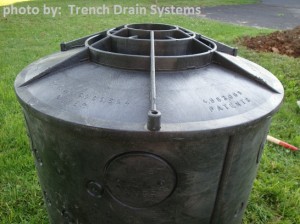 While I understand that by now I will never be forgiven for my carbon footprint, I decided that my commuting habits should not stop me from making small changes in my lifestyle. The least I could do was reduce the amount of garbage I generate. Since I recently began buying local produce and eating less processed food, it seemed natural that my first step should be to make a compost bin so I can replenish the soil in my vegetable garden.
While I understand that by now I will never be forgiven for my carbon footprint, I decided that my commuting habits should not stop me from making small changes in my lifestyle. The least I could do was reduce the amount of garbage I generate. Since I recently began buying local produce and eating less processed food, it seemed natural that my first step should be to make a compost bin so I can replenish the soil in my vegetable garden.
One of the problems with composting is critters. Another problem, particularly in summer months, is the smell. Compost heaps have a tendency to both annoy neighbors and act as a food bank for woodland critters scurrying through. Because I live in a suburban area and enjoy a pleasant relationship with my neighbors, my project began by researching underground compost bins, which not only put a lid on smell but keep scavengers at bay.
Underground Composting Considerations:
- Smells
- Curious Critters
- Water Saturation
- Accessibility
- Aeration
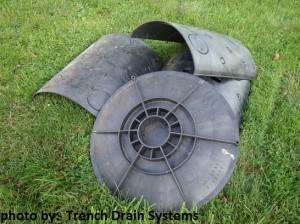 Underground composting bins are generally round, bottomless and lidded. They are often perforated to allow for drainage and nutrient exchange, a critical part of the composting process that lets earthworms in but keeps water levels manageable. Product options are almost limitless, but I happened to have an NDS Flo-Well on hand that saved me some time and money.
Underground composting bins are generally round, bottomless and lidded. They are often perforated to allow for drainage and nutrient exchange, a critical part of the composting process that lets earthworms in but keeps water levels manageable. Product options are almost limitless, but I happened to have an NDS Flo-Well on hand that saved me some time and money.
The NDS Flo-Well is actually a 24” diameter dry well made of recycled polyolefin designed to hold and distribute water runoff into the surrounding site. Unlike catch basins, which evacuate water via underground pipes, the Flo-Well is marked by its knockout leaching ports. The dry well naturally regulates drainage as water saturation levels in the surrounding soil fluctuate. The Flo-Well retains water when it pours, but its knockouts allow it to release water back into the soil as water levels drop.
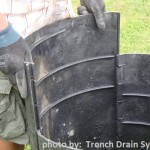 NDS Flo-Well panels slide together via a tongue-and-groove locking system that prevents them from popping loose once in place. Each dry well panel has eighteen 1.5” and three 4.5” knockout leaching ports, allowing for adjustable water drainage. An added benefit is that the assembled Flo-Well with lid is 28.75” tall and capable of holding 49 gallons.
NDS Flo-Well panels slide together via a tongue-and-groove locking system that prevents them from popping loose once in place. Each dry well panel has eighteen 1.5” and three 4.5” knockout leaching ports, allowing for adjustable water drainage. An added benefit is that the assembled Flo-Well with lid is 28.75” tall and capable of holding 49 gallons.
It took several digging sessions to install my new compost bin. My plan was to bury the Flo-Well to its lid looked easy enough at the outset. I began digging with the assumption that a 26” deep hole could be easily accomplished in an evening but quickly realized the error when my shovel struck buried treasure a foot down. Two hours of excavation later, I unearthed a “Sinclair Pennsylvania Motor Oil” sign that might have been five feet tall before rust warped it.
What it was doing buried in the yard I may never know.
After my detour, I enlisted the help of a drainage expert to finish digging and to install the Flo-Well. The final dig was quick and mostly involved leveling the floor and walls of the pit. We hit a second snag, however, when we uncovered a buried electric line. This goes to show you that you should always call your electric and gas companies before digging. Luckily for me, the line was a disconnected leftover from an old chicken coop no longer on the premise.
Once the hole was deep enough, we dropped flat stones into the bottom to create a divide between the compost and normal dirt. After tamping the stones down to secure them, we dropped the Flo-Well into the hole and double-checked that it would be deep enough not to cause odor.
We began filling in the surrounding dirt, stopping when the dry well was halfway buried to moisten the soil so it would compact and settle easier. I also realized then that it would be a good idea to attach the lid before soil pressure could bend the Flo-Well out of its cylindrical shape. Most likely, if I had thought of this any later there would have been an aggravating process of re-digging the hole.
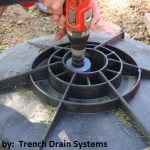 The final step to creating my underground compost bin was to level out the leftover dirt into a raised bed. We drilled out the 4” knockout on top of the Flo-Well so that I wouldn’t need to remove the 8lb lid every time I had compost to dispose. I inserted a 4” grate with a PVC collar into the opening to create a removable cap for my compost bin. I find that it is easily removable, stylish and keeps the critters out!
The final step to creating my underground compost bin was to level out the leftover dirt into a raised bed. We drilled out the 4” knockout on top of the Flo-Well so that I wouldn’t need to remove the 8lb lid every time I had compost to dispose. I inserted a 4” grate with a PVC collar into the opening to create a removable cap for my compost bin. I find that it is easily removable, stylish and keeps the critters out!
We added more flagstone around the bin as a finishing touch and planted a squash plant for good measure. Then, it was time to put my new compost bin into action!
To learn more about the NDS Flo-Well, contact Trench Drain Systems at 610-638-1221 or email a sales associate!

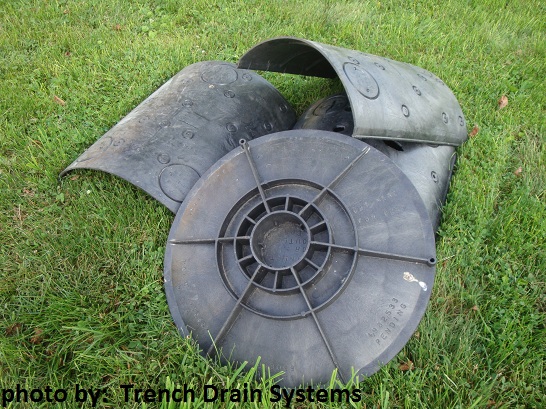
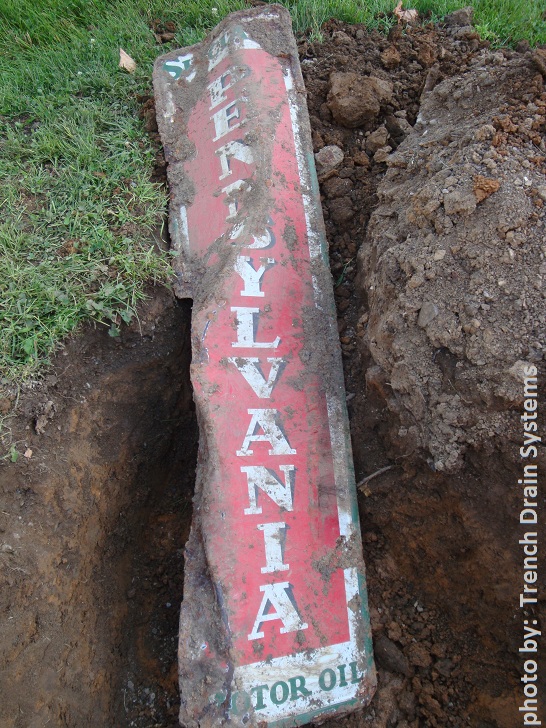
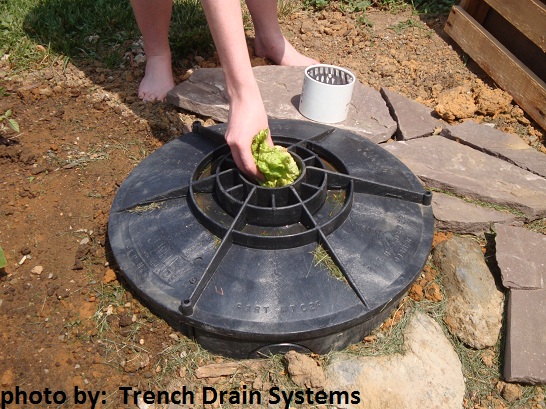
This is a neat idea, and I can see using it to dispose of pet waste. However, I USE my compost for my garden, and this wouldn’t actually allow you to retrieve the compost, as far as I can tell.
Martha,
Thanks for commenting! I somewhat agree with your statement. I opted for an “out of woodland critter reach” pit at the cost of easy access. Since the compost pit is deep I’ll need to do some extra work aerating and later removing the compost, but I think it’ll be worth it in the end.
Pingback: How To Compost | Garden Web Tips
Pingback: The Hypocrisy in Going Green « Hannah's Scribbles: